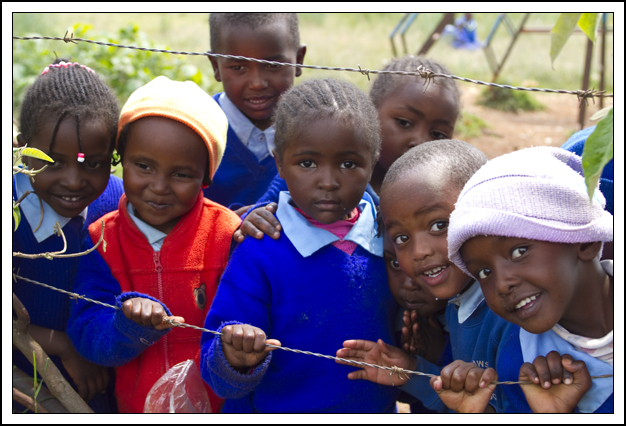We are flying low over The Great Rift Valley in a 9-passenger single-turboprop Caravan, a popular plane in Africa because of its capability to use rough, pitted fields for landing strips. Below us a train of wildebeest, marching like soldiers in a column that stretches across the plain as far as the eye can see, slowly moves north. The seasonal migration from the southern Serengeti to Masai Mara has begun.
 A few minutes earlier we passed over a herd of maybe 60 or 70 elephants crossing the Ewaso Ng’iro River; not the big river with the same name that rises from the western slope of Mount Kenya and flows north through Samburu where, in March, it burst its banks and flooded much of the famed game reserve, including Elephant Watch Camp, which we plan on visiting at the end of our expedition, but the smaller river rising from the Mau Escarpment that flows south to Lake Natron in Tanzania. (Perhaps the confusion of names comes from the fact that Ewaso Ng’iro means brown or muddy water, which could be said about half the rivers in Eastern Africa.)
A few minutes earlier we passed over a herd of maybe 60 or 70 elephants crossing the Ewaso Ng’iro River; not the big river with the same name that rises from the western slope of Mount Kenya and flows north through Samburu where, in March, it burst its banks and flooded much of the famed game reserve, including Elephant Watch Camp, which we plan on visiting at the end of our expedition, but the smaller river rising from the Mau Escarpment that flows south to Lake Natron in Tanzania. (Perhaps the confusion of names comes from the fact that Ewaso Ng’iro means brown or muddy water, which could be said about half the rivers in Eastern Africa.)
Our pilot, Hamish Rendall, has slowed the Caravan to a crawl so that Pete can open a rear window on the plane and hang out as far as he dares to shoot the vast array of wildlife below us—hippos in the river, zebras in the plains, as well as ostriches, waterbuck, warthogs, giraffes, sable antelope, eland, impala. In addition to the hundreds of elephants and an endless parade of wildebeest.
“It’s like Jurassic Park,” says Fletch, who, along with Hardy, took a red-eye from London last night, arrived in Nairobi two hours ago, and now is flying over one of the greatest displays of wildlife in the world.
Pete asks Hamish to make another pass over a mixed herd of wildebeest and zebra that, having broken off from the migrating group, mingle in a tight circle, like drunks at a cocktail party, and as the plane’s shadow cuts across the animals, blocking out the sun for just a moment, the crazy-tailed wildebeest shake their heads, kicks their hoofs, and flee to the four winds, maddened by our shadowy presence.
We all laugh and shake our heads in wonderment, just as crazed as the beasts below us.






Recent Comments